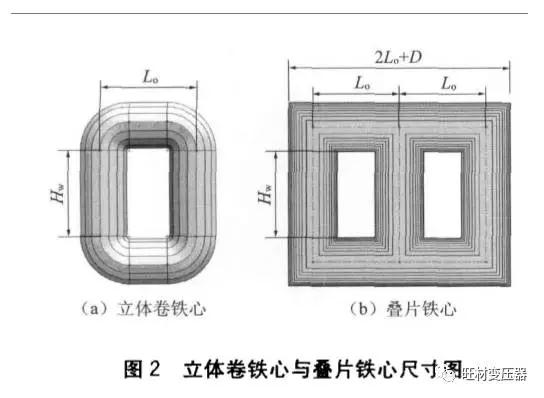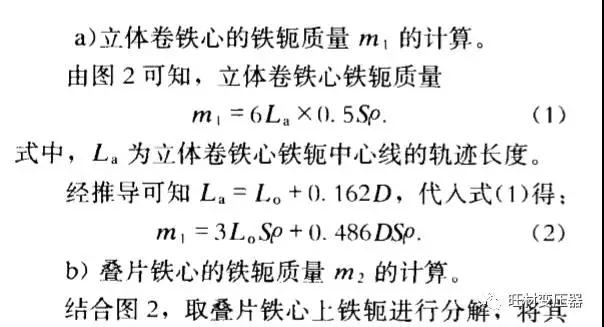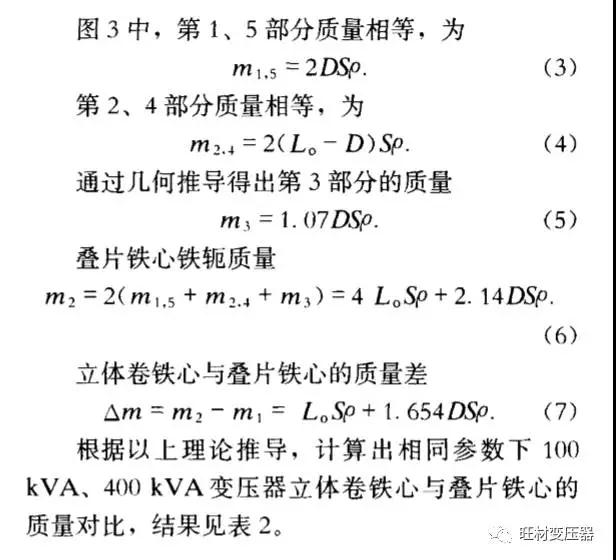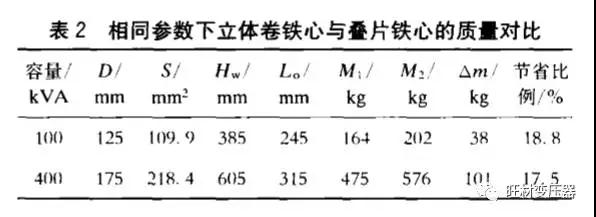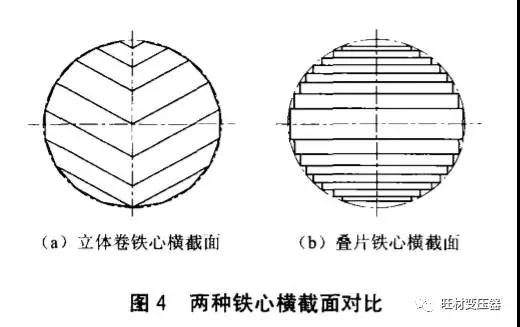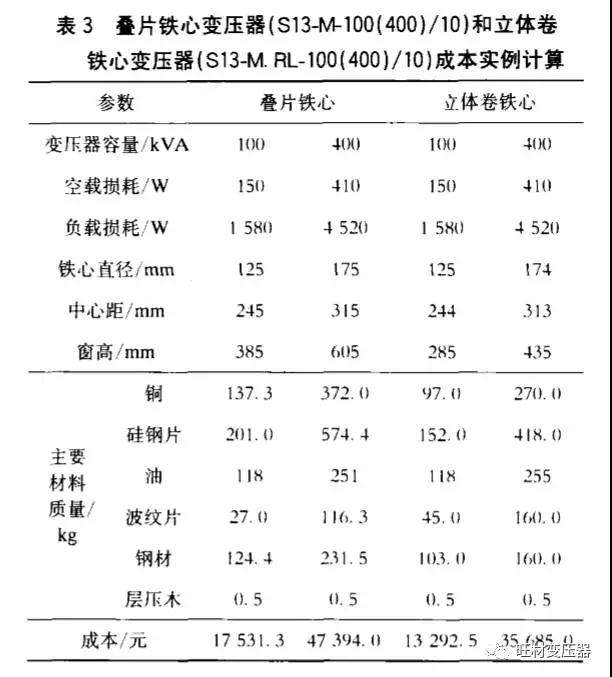Abstract
Based on the structural characteristics of three-dimensional coiled core transformer, the material saving and energy saving are analyzed. Through comparative calculation under certain conditions, it is concluded that the amount of silicon steel sheet used in three-dimensional coil core decreases by about 23% compared with that of laminated core, and the loss of transformer under no-load decreases by l8%-28% due to the decrease of core quality. Taking advantage of its low no-load loss, the cost of three-dimensional coil core transformer will be greatly reduced in the design of the optimal product scheme. Stereo-coiled core transformer is a kind of environmental protection product with remarkable material-saving and energy-saving effect, especially suitable for high-standard and low-loss fields.
Key word
Stereo-coiled core transformer; Laminated core transformer; No-load loss; Energy saving
Because of its three-phase symmetrical structure, three-phase coil transformer has the characteristics of symmetrical magnetic circuit, low excitation current, low no-load loss, low harmonics and low noise. This kind of transformer is widely used in many market areas requiring high performance and low loss, and has achieved good economic benefits.
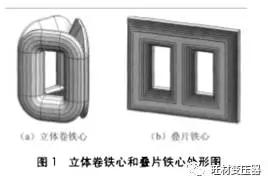
As shown in Fig. 1, the three-dimensional coil core is symmetrical in space structure, and it is easier to guarantee the electromagnetic parameters than the three-phase three-column laminated core (hereinafter referred to as laminated core). This kind of core has the prominent advantage of saving material and energy. When the three-dimensional coil core is used in S13 series transformer with high loss standard, its advantage is more obvious. By comparing and analyzing the three-dimensional coil core and laminated core, this paper theoretically calculates the material saving quantity of m-dimensional coil core, and verifies the correctness of the analysis result with an example.
THEORETICAL ANALYSIS OF SAVING MATERIAL AND ENERGY OF 1-DIMENSIONAL COILED IRON MUST TRANSFORMER
One point one
Near zero waste
The three-dimensional core is made of several trapezoidal strips which are successively wound. The trapezoidal strips of different sizes are cut by a special folding machine, and the material utilization rate is close to 100%.
The upper and lower yokes and pillars of laminated cores will wash away the triangular wastes in the production process, which accounted for about 5% of the total quality of laminated cores.
One point two
Quality comparison between three-dimensional coiled core and laminated core
In core diameter D, column cross-sectional area S, window height Hw, center distance L. In the same case, the difference of the quality between the three-dimensional coil core and the laminated core is equal to the difference of the yoke quality, as shown in Table 1.
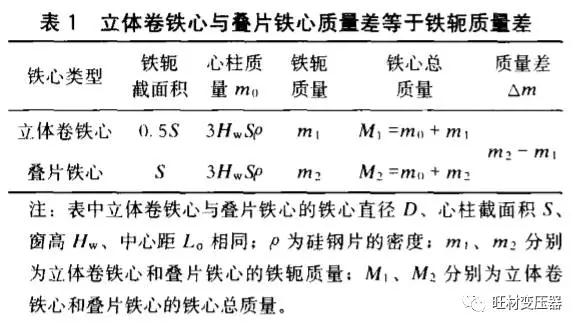
From Table 1, it can be seen that the core column mass of the two cores is equal (m0), and the core mass difference m=m1-m2. The calculation of M1 and M2 is analyzed in detail below. Fig. 2 is the dimension diagram of three-dimensional coil core and laminated core.
As can be seen from Table 2, the quality of three-dimensional coil core is 18% lower than that of laminated core. Considering the waste of laminated core by 5%, the average material consumption of three-dimensional coiled core is 23% less than that of laminated core.
One point three
Core Filling Coefficient
The cross section of the solid coil core is a quasi-polygon close to the circle (as shown in Fig. 4 (a), and its filling coefficient is 0.95-0.96; the cross section of the laminated core is a step type (as shown in Fig. 4 (b), and its filling coefficient is 0.89-0.925. When the effective area S is the same, the diameter of the three-dimensional core column is 2%-3% smaller than that of the laminated core column, which can reduce the length of the coil wire by 2%-3%. It can save raw materials such as copper and reduce the load loss.
One point four
Natural consumption reduction
When the unit loss is fixed, the no-load loss of the core is proportional to the quality of the core and the technological coefficient. It is assumed that the unit loss of the two cores is Pt1 and that of the yoke is Pt2. The no-load loss of laminated core is P0a = K0Pt1M, and that of stereoscopic coil core is P0b = K0 (Pt1 m0, +Pt2 m1). Among them, K0 is the technological coefficient, the technological coefficient of laminated core is 1.15-1.3, and that of three-dimensional coil core is 1.05-1.1[5] because of its annealing process. Using the calculation results in Table 2, the mass of the three-dimensional coil core is about 18% lower than that of the laminated core. Based on the above relationship and the calculation of an example, the no-load loss of the three-dimensional coil core can be reduced by 18%-28%.
One point five
Further material saving from loss
Under the same loss standard requirements, by using the characteristics of low no-load loss of the three-dimensional coil core, the no-load loss of the three-dimensional coil core is similar to that of the laminated core by increasing magnetic flux density and increasing no-load loss, which will further reduce the quality of the three-dimensional coil core and the consumption of copper.
2. Case calculation of comprehensive cost reduction
In the design of S13 series transformers, because of the low requirement of no-load loss, the magnetic flux density must be reduced when designing core. Usually 1.4T and 95 silicon steel sheets are used to meet the loss standard requirements, which will inevitably lead to the increase of the quality and cost of laminated core. The no-load loss of the three-dimensional coil core can be reduced by 18% N28%. By adjusting the proportion of copper and iron and increasing the flux density, the advantages of no-load loss can be utilized to achieve the purpose of reducing the consumption of copper and iron. In fact, the more stringent the no-load loss requirement is, the greater the advantage of 13-dimensional coil core transformer is.
The actual cost of 100 kVA and 40 () kVA transformers is calculated. The results are shown in Table 3. By comparison, the copper consumption of three-dimensional coil core decreased by about 24%, the iron consumption decreased by about 26%, and the final total cost decreased by about 25%.
3 conclusion
Firstly, this paper analyses the material-saving quantity of the three-dimensional coil core from the structural point of view. By saving material, the core will naturally reduce its loss, and then make full use of its advantages of low no-load loss and high filling rate to comprehensively reduce the consumption of copper and iron to reach the optimal design scheme. Through the analysis of this paper, the following conclusions can be drawn:
(a) Under the same parameter condition F, the average material saving of three-dimensional coil core is 23% and the no-load loss is reduced by 18%-28% compared with laminated core.
B) The cross section of the three-dimensional coil core is a quasi-polygon close to the circle, and its filling coefficient is 4%-6% higher than that of the laminated core.
C) Taking advantage of the advantages of low no-load loss and high filling rate of S13 three-dimensional coil core transformer, its copper consumption can be reduced by more than 24% compared with that of S13 laminated core transformer, the core consumption can be reduced by more than 26%, and the final total cost can be reduced by about 25%.
From the above analysis, it can be seen that the three-dimensional coil core transformer is an environmental protection product with remarkable material saving and energy saving effect, especially in the field of high standards and low losses.


